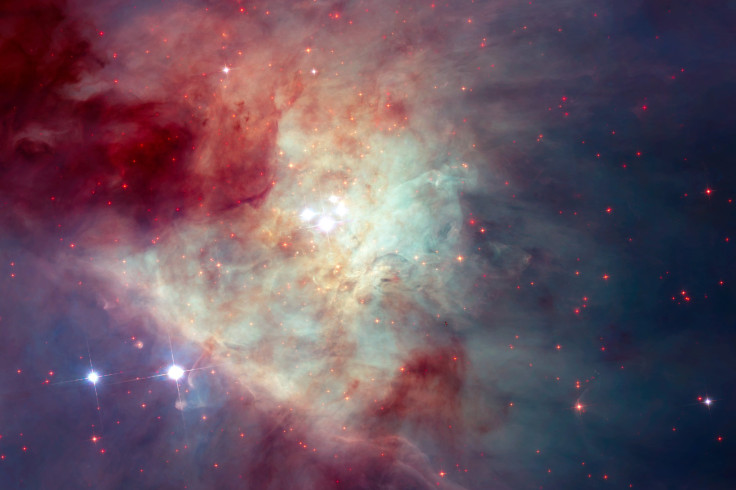Hubble Finds Runaway Star In Orion Nebula That Left Its Broken System 540 Years Ago

The Hubble Space Telescope has allowed scientists to create a new mosaic image of the Orion Nebula complex, the large and famous star formation region about 1,400 light-years from Earth. And while creating that image, astronomers may have solved a cosmic puzzle that dates back 540 years, when a multiple-star system in the nebula broke apart.
A relatively small region of young stars within the Orion Nebula complex, called the Kleinmann-Low Nebula, is home to three stars that are thought to have been part of the same star system about six centuries ago when it broke up. Those three stars were ejected in different directions, and two of them had been previously observed, traveling in opposite directions. But the duos combined energy didn’t add up, and astronomers were forced to account for a third runaway star that hadn’t been found. Till now, that is.
Read: Hubble Snaps A Distant Barred Spiral Galaxy
“The new Hubble observations provide very strong evidence that the three stars were ejected from a multiple-star system. Astronomers had previously found a few other examples of fast-moving stars that trace back to multiple-star systems, and therefore were likely ejected. But these three stars are the youngest examples of such ejected stars. They're probably only a few hundred thousand years old. In fact, based on infrared images, the stars are still young enough to have disks of material leftover from their formation,” lead researcher Kevin Luhman of Penn State University in University Park, Pennsylvania, said in a statement Friday on the NASA website.
The observations were made using the infrared abilities of Hubble, which allowed astronomers to peer behind the swirling clouds of gas and dust that populate the Orion Nebula. In the image above, stars appear as the bright red dots. Among these stars, astronomers found one star moving at about 200,000 kilometers an hour (about 125,000 miles an hour), the European Space Agency (ESA) said in another statement Friday. That star is the likely missing runaway third star from the system that broke up 540 years ago, and further observations are needed to say so for certain.
Hubble is a collaboration between NASA and ESA. Findings of the team will appear in the March 20 issue of the Astrophysical Journal Letters.
© Copyright IBTimes 2024. All rights reserved.











